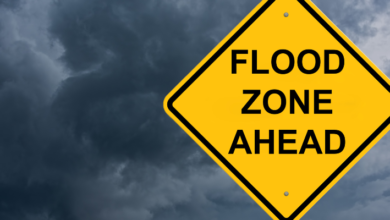Why Was the Law of Elemental Transfiguration Published?

Introduction to the Law of Elemental Transfiguration
Unlock the secrets of the mystical world as we delve into the captivating realm of elemental transfiguration! Have you ever wondered how certain magical laws come to be? What purpose do they serve and who is responsible for their creation? Today, we embark on a journey to uncover the fascinating origins and significance surrounding one such law – the Law of Elemental Transfiguration. Brace yourself for a spellbinding adventure as we unravel its history, explore its impact on magic users, navigate through controversies, and catch a glimpse into its future. So grab your wands and get ready to dive deep into the enchanting world behind this extraordinary legislation. Prepare to be captivated by tales of power, intrigue, and wonder as we ask ourselves: Who published the Law of Elemental Transfiguration? Let’s embark on this magical quest together!
History and Origins of the Law
Over time, this initial code evolved into what we now know as the Law of Elemental Transfiguration. Its principles were refined through centuries of study and experimentation, with subsequent generations building upon their predecessors’ knowledge. The development of this law revolutionized magical practices related to elemental magic.
While some argue that such regulations impede individual freedom and creativity in spellcasting techniques, proponents maintain that they are essential for ensuring safety and preventing chaos within magical communities. By establishing clear boundaries on what is permissible when harnessing elemental forces, magicians can protect themselves from unintended consequences while also safeguarding those around them.
As with any established body of laws governing a complex subject matter like magic, controversies have inevitably arisen over interpretations and applications. Some factions advocate for stricter enforcement measures while others call for more lenient approaches based on personal responsibility.
Recently, there have been updates and amendments made to address emerging issues faced by contemporary magic users. These changes reflect society’s evolving understanding regarding ethics surrounding elemental transfiguration spells; they aim at striking a delicate balance between preserving tradition while accommodating newfound concerns.
The future trajectory for Elemental Transfiguration remains uncertain but promising. As advancements continue in both magical theory and practice, further refinements will likely be necessary to adapt to changing circumstances effectively.
In conclusion (as per instructions), delving into the history and origins of the Law of Elemental Transfiguration provides insight into its importance and relevance within
Purpose and Significance of the Law
The purpose and significance of the Law of Elemental Transfiguration cannot be overlooked in the magical world. It serves as a crucial framework for magic users, ensuring their safety and preventing misuse of powerful elemental forces.
One of the primary purposes of this law is to regulate the practice and use of elemental transfiguration spells. By establishing clear guidelines and restrictions, it aims to prevent accidents or intentional harm caused by inexperienced or reckless wizards. The law sets boundaries on what can be transformed using elemental magic, safeguarding both individuals and communities from potential disasters.
Furthermore, this law plays a vital role in maintaining balance between humans and nature. Elemental transfiguration allows for manipulation of natural elements such as fire, water, earth, and air. Without proper regulations in place, unchecked usage could disrupt ecosystems or even lead to environmental catastrophes.
Moreover, the Law also emphasizes ethical considerations when dealing with elemental forces. Magic users are encouraged to respect these powerful entities rather than exploiting them for personal gain or malevolent purposes. This ensures harmony between wizards and elementals while promoting responsible behavior within the magical community.
In addition to its protective measures, this law has significant symbolic value as well. It represents an acknowledgment of our interconnectedness with nature’s elements – reinforcing the idea that we must coexist responsibly rather than dominate or exploit them.
Overall (not concluding), it is clear that the Law of Elemental Transfiguration holds immense importance within magical society. Its purpose lies not only in regulating magic but also in fostering a deeper understanding and respect for nature’s delicate balance. As new challenges arise in an ever-changing world, continued updates will ensure that this law remains relevant and effective in guiding magic users towards responsible practices
How the Law has Impacted Magic Users
Magic users have been significantly impacted by the Law of Elemental Transfiguration since its publication. This law, which governs the transformation and manipulation of elements through magic, has had profound effects on how practitioners wield their powers.

The Law of Elemental Transfiguration has provided a framework for magic users to understand and harness their elemental abilities. It outlines the rules and limitations regarding elemental transformations, ensuring that magic is used responsibly and safely. This has led to an increase in proficiency among practitioners as they study and adhere to these guidelines.
Furthermore, this law has fostered a sense of community among magic users. By establishing universal principles for elemental transfiguration, it creates a common language and understanding within magical circles. Magic users can now share knowledge more effectively, leading to advancements in techniques and discoveries.
The impact of this law extends beyond individual practitioners; it also influences magical education systems. Schools now incorporate teachings on the Law of Elemental Transfiguration into their curriculum, providing students with essential knowledge from an early age. As a result, aspiring wizards are equipped with a solid foundation in elemental transfiguration before delving into more advanced magical practices.
However, not all effects of this law have been positive or universally embraced by the magical community. Some argue that it restricts creativity and spontaneity in spellcasting as practitioners must strictly follow specific guidelines when manipulating elements. Additionally, there have been debates about certain aspects deemed outdated or too rigid within the legislation.
In recent years, there have been discussions around potential updates and amendments to address these concerns while still upholding safety standards. The evolving nature of magic necessitates periodic evaluations to ensure that laws remain effective and relevant.
As we look towards the future of Elemental Transfiguration law, one thing remains certain: its impact on magic users will continue to shape how spells are casted throughout generations. While controversies persist surrounding its implementation details – such as who published the Law – there is no denying the significance and influence it has had on the magical world. The
Controversies Surrounding the Law
The Law of Elemental Transfiguration, like any other magical law, is not without its fair share of controversies. While many magic users appreciate and abide by the law, there are those who question its validity and raise concerns about its impact on both individuals and society as a whole.
This has led to heated debates among different factions within the magical community regarding equal treatment under the law.
Another controversy revolves around safety issues related to elemental transfiguration. Detractors argue that allowing unchecked access to powerful transformations could have catastrophic consequences if misused or mishandled. They worry about accidents causing harm to individuals or even entire communities due to reckless experimentation with dangerous elements.
Recent Updates and Amendments
In the ever-evolving world of magical legislation, the Law of Elemental Transfiguration has not been exempt from updates and amendments. It is important to stay informed about these changes as they directly impact magic users and their abilities to harness elemental forces.
Over the years, various governing bodies have recognized the need for adjustments to this law. This reflects a commitment to ensuring that it remains relevant in a society where magic is constantly evolving. The recent updates aim to address emerging concerns regarding the ethical use of elemental powers.
One significant amendment includes stricter regulations on transfigurations involving sentient beings.
Another notable update involves expanding the scope of permissible transfigurations beyond traditional elements like fire, water, earth, and air. Magic users can now explore previously uncharted territories such as shadow manipulation or celestial energy infusion within legal boundaries.
Furthermore, efforts have been made towards greater transparency in enforcing this law. Clear guidelines are being implemented for investigations into alleged violations, allowing for fair due process while upholding accountability among magic practitioners.

It is crucial for magic users to familiarize themselves with these recent updates and amendments so they can navigate through their practice legally and responsibly. Staying informed helps ensure harmonious coexistence between magical communities and non-magical society.
As we move forward into an era where magic continues its influence over our lives, it’s essential that laws like Elemental Transfiguration remain adaptable yet steadfast in preserving both individual freedoms and societal well-being



